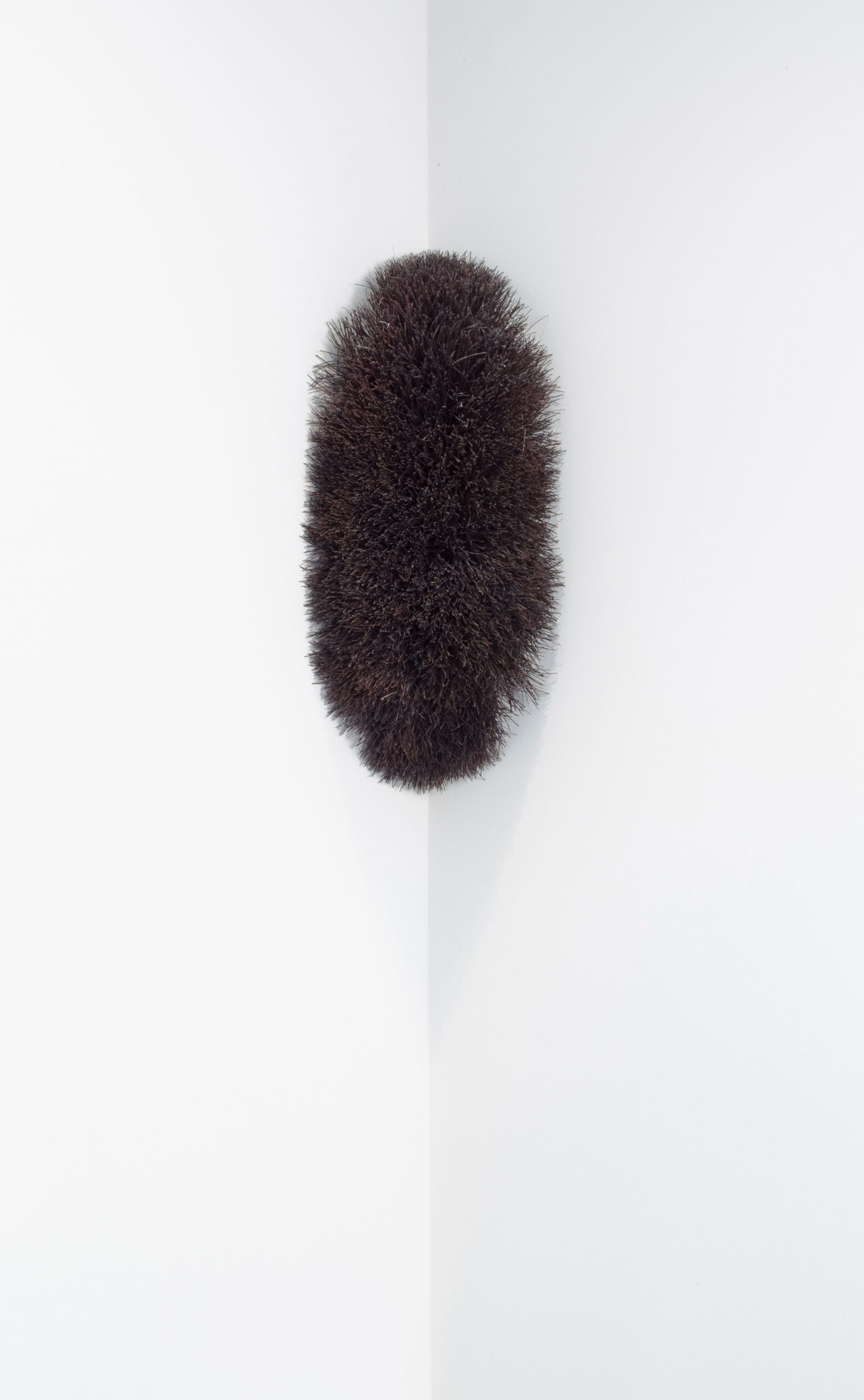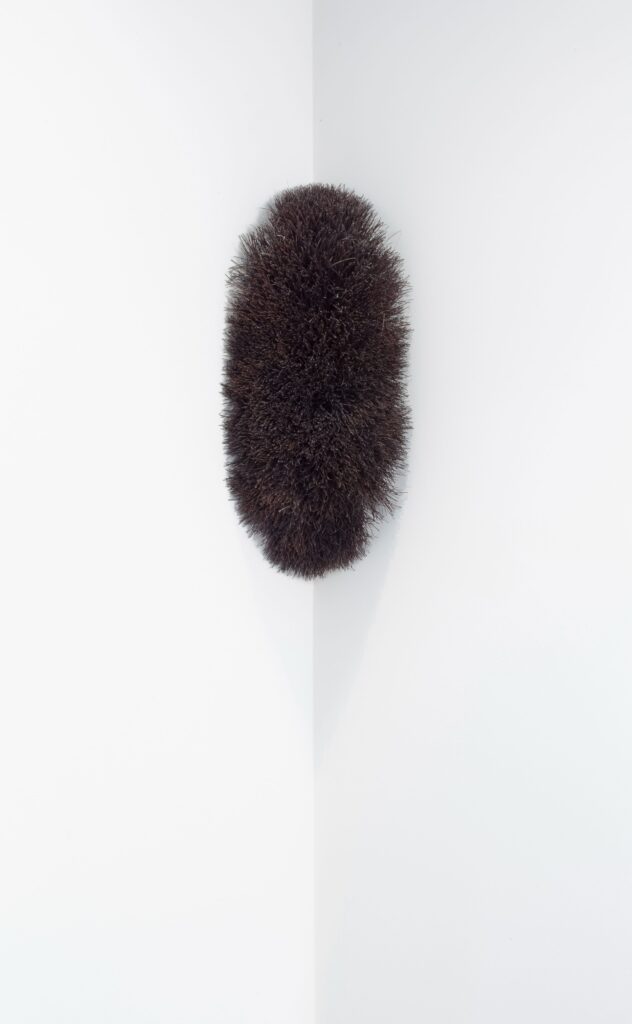Richard Artschwager


Past exhibition
Richard Artschwager
About the Exhibition
“One of my first undertakings, and maybe the only one, is to work at the connections between “sculpture” and “painting.”
—Richard Artschwager
Initially embarking on a career in science, Richard Artschwager turned his attention to artmaking after returning from a tour of duty in Europe (1944-47). With the assistance of the GI Bill, Artschwager studied for a year in Amédée Ozenfant’s studio school. During the early 1950s, Artschwager abandoned art completely, opting instead to support his young family as a furniture maker—a skill that would deeply inform his later artwork. When his furniture workshop was destroyed by fire in 1958, he reconsidered being an artist. Fortuitously for Artschwager, 1958 signaled the beginning of the end of Abstract Expressionism’s reign (a movement to which the artist was averse). Around 1960, Artschwager was commissioned by the Catholic Church to make altars for ships. The experience of making something functional that simultaneously was more than merely utilitarian, in combination with seeing Mark di Suvero’s sculptures for the first time, encouraged Artschwager to seek an artmaking process more in line with his identity as a craftsman.
Formica proved an important material for Artschwager in his transition from craftsman to fine artist. As Artschwager explains:
It was Formica which touched it off. Formica, the great ugly material, the horror of the age, which I came to like suddenly because I was sick of looking at all this beautiful wood. . . . So I got hold of a scrap of Formica—something called bleached walnut. It worked differently because it looked as if wood had passed through it, as if the thing only half existed. . . . It was a picture of wood. If you take that and make something out of it, then you have an object.
From this point on, Artschwager would continue to investigate the integration of fact (i.e., wood) and image (i.e., Formica)—the utilitarian and the purely aesthetic. Formica is used in many of the sculptures in The Arts Club’s exhibition such as Door (1987), a wall-mounted “cabinet” with a door that opens but which has no storage space behind it, merely more Formica. This “picture of wood” appears throughout Artschwager’s oeuvre in his splatter pieces, punctuation pieces, blps, and freestanding sculptures.
While questioning the dividing line between art and utility, Artschwager’s art also questions the traditional placement of art. Situated in the right angles where wall meets wall, his splatter pieces deal with optical illusions and the distortion of objects when seen at oblique angles. Corner (1991–92), Bristle Corner (1995), and Splatter Chair (Rocking Chair) (1996), which look as if they were hurled at great velocity into their corners and are now permanently suspended in disarray (literally splattered), are bizarrely disrupted by perspectival foreshortening and appear to be on the verge of anamorphosis.
The punctuation pieces are a group of works Artschwager first made in the 1960s as isolated, self-contained objects. Artschwager maintains that art is a “pre-literate” experience, so although one is inclined to “read” his punctuation works in terms of language, they are better imagined operating in the observable space between words, at the interstices between articulation and abstraction. Artschwager’s representations of empty quotation marks dangle with suspense. Subjugating everything in sight, these marks do not signal absence, but command an audience, conducting space with the mute authority punctuation has over text in a sentence or words on a page. Pieces like Untitled (Quotation Marks) (1980) perform the job of a frame, signifying art is in the area. Others, like Exclamation Point (Yellow Bristle) (2001), are quite figurative. Artschwager has even described some of his works in terms of the body and gestures. Referring to an exclamation point as “the Prince of Punctuation,” he imagines it as an abstraction of someone hopping on one foot, while a wooden Pregunta (Spanish for “question”) from 1983 can be seen as mimicking a shrug of the shoulder.
Blps (shorthand for “blips”) are an important sub-genre of Artschwager’s art. Their shape has been described by the artist as “a longitudinal cross-section of a knackwurst.” Blps are a literal incarnation of Artschwager’s desire for a “very hard, dense, heavy afterimage.” Portable and easily recognized, blps embody Artschwager’s love of linguistic references. Blps come in various sizes and can be hairy (bristly), like Brush Blp (1988), or made of wood, painted directly on walls, or hung in the air. “Proto-punctuation” pieces, blps operate at large, switching their surroundings into art.
About the Artist
American artist Richard Artschwager (b. 1923) is known for his pictorial, furniture-like sculptures, and his use of industrial materials such as plywood, simulated wood Formica, and Celotex (a textured fiberboard). His work combines painting and sculpture, representation and abstraction, and incorporates elements of a number of styles—Pop, Minimalism, Photo-Realism, and Conceptualism—while remaining unique among his contemporaries.